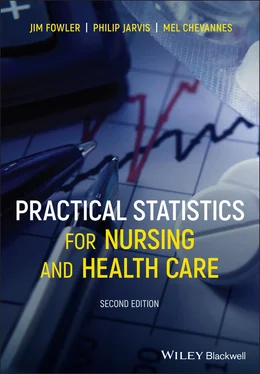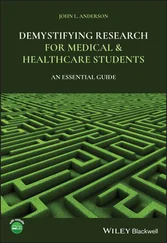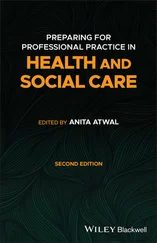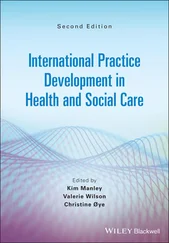A second reason why statistical literacy is important to health care workers is if they are going to undertake an investigation that involves the collection, processing and analysis of data on their own account. If the results are to be presented in a form that will be authoritative, then a grasp of statistical principles and methods is essential. Indeed, a programme of work should be planned anticipating the statistical methods that are appropriate to the eventual analysis of the data. Attaching some statistical treatment as an afterthought to make a survey seem more ‘respectable’ is unlikely to be convincing.
1.3 The Limitations of Statistics
Statistics can help an investigator describe data, design experiments, and test hunches about relationships between things or events of interest. Statistics is a tool that helps acceptance or rejection of the hunches within recognized degrees of confidence. They help to answer questions like, ‘If my assertion is challenged, can I offer a reasonable defence?’
It should be noted that statistics never prove anything. Rather, they indicate the likelihood of the results of an investigation being the product of chance.
1.4 Performing Statistical Calculations
Today there is an abundance of internet sites and free statistical software packages that are capable of performing all the statistical analyses described in this book. However, we suggest caution against jumping straight into using these programs and internet sites without first understanding the underlying background and principles of a particular statistical technique. These tools can perform any analysis that you ask of them, but cannot provide the intelligent reasoning about whether the test is appropriate for the kind of data you are using. Moreover, a ‘screen shot’ of the analysis can be ambiguous and confusing if you do not understand the underlying principles. We feel this is best achieved by first familiarizing yourself with the techniques ‘long hand’, using a simple spreadsheet package working through our own examples and applying them to your own data. When using any statistical software for the first time it is best practice to ensure that you are able to replicate text book examples to check that you are using the program correctly and that the software is working correctly. All the calculations and worked examples in this book were performed using the LibreOffice 6.3.3.2 downloaded from https://www.libreoffice.org.
1.5 The Purpose of this Text
The objectives of this text stem from the points made in Section 1.2. First, the text aims to provide nurses and health care workers with sufficient grounding in statistical principles and methods to enable them to understand and assess the significance of survey reports, journals and other literature. Secondly, the text aims to present them with a variety of the most appropriate statistical tests for their problems. Thirdly, guidance is offered on ways of presenting the statistical analyses, once completed.
Full details of references and other material that we suggest for further reading are listed in the Bibliography. For assistance in cross‐referencing, we classify items according to chapter. Thus, Section 9.1, Figure 9.1, Table 9.1 and Example 9.1 are all to be found in Chapter 9.
2 Health Care Investigations: Measurement and Sampling Concepts
2.1 Introduction
A health care investigation is typically a five‐stage process: identifying objectives; planning; data collection; analysis; and, finally, reporting. The methodologies frequently used are sample surveys, clinical trials and epidemiological studies. These are the subject of this and subsequent chapters. However, we must first be clear about the definitions of some basic terms. Many of the terms used in statistics are used in daily life, where their meanings might be quite different. The word ‘population’ may conjure images of ‘people’, while ‘sample’ might mean a ‘free sample’ of cream offered by a pharmaceutical company, or a ‘sample’ requested by a doctor for urine analysis. In statistics, however, these words have much more precise meanings.
2.2 Populations, Samples and Observations
In statistics, the term ‘population’ is extended to mean any collection of individual items or unitsthat are the subject of investigation. Characteristics of a population that differ from individual to individual are called variables. Length, age, weight, temperature, and number of heart beats per minute, are examples of variables to which numbers or values can be assigned. Once numbers or values have been assigned to the variables, they can be measured.
Because it is rarely practicable to obtain measures of a particular variable from all the units in a population, the investigator has to collect information from a smaller group or sub‐setthat represents the group as a whole. This sub‐set is called a sample. Each unit in the sample provides a record, such as a measurement, which is called an observation. The relationship between the terms we have introduced is summarized below:
| Observation: |
3.62 kg |
| Variable: |
weight |
| Sample unit (item): |
a new‐born male baby |
| Sample: |
those new‐born male babies that are weighed |
| Statistical population: |
all new‐born male babies that are available for weighing. |
Note that the biological or demographic population would include babies of both sexes and, indeed, all individuals of whatever age or sex in a particular community.
2.3 Counting Things – The Sampling Unit
We sometimes wish to count the number of items or objects in a group or collection. If the number is to be meaningful, the dimensions of the collection have to be specified.
For example, ‘the number of patients admitted to an accident and emergency department’ has little meaning unless we know the time scale over which the count was made. A collection with specified dimensions is called a sampling unit. An observation is, of course, the number of objects or items counted in a sampling unit. Thus, if 52 patients are admitted to a particular Accident and Emergency (A&E) department in a 24‐hour period, the sampling unit is ‘one A&E 24‐hour period’ and the observation is 52. The sample is the number of such 24‐hour periods that were included in the survey. However, the definition of the ‘population’ requires care. It might be tempting to think that the population under investigation is something to do with patients, but this is not the case when they are being counted. The statistical population comprises the same ‘thing’ as the sample units that comprise the sample. In this case, the statistical population is a rather abstract concept, and represents all possible A&E department 24‐hour periods that could have been included in the survey.
It is very important to be able to identify correctly the population under investigation, because this is essential in formulating a ‘null hypothesis’ when undertaking statistical tests. This is the subject of Chapter 11.
As we said above, it is not always possible or practicable to sample every single individual or unit in a particular population either due to its size, or constraints on available resources (for example, cost, time, manpower). The solution is to take a sample from the population of interest and use the sample information to make inferences about the population.
Читать дальше












